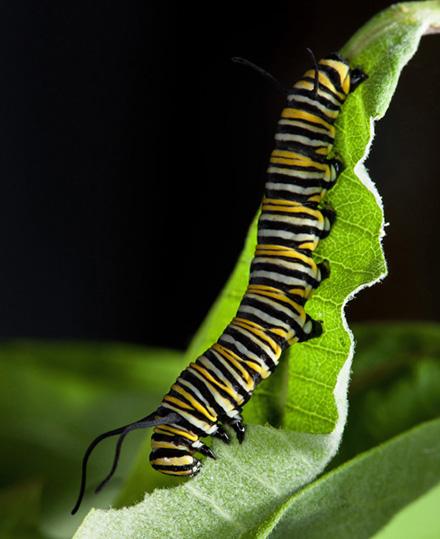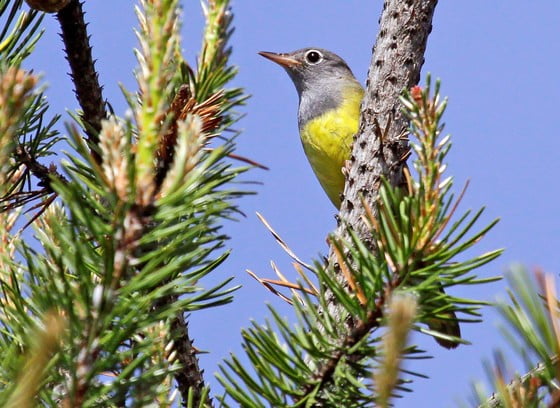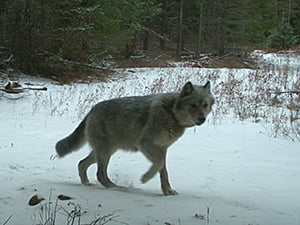Not all milkweeds are created equal when it comes to species of the native flowering plants that monarch butterflies prefer most.

That’s the conclusion of a team of Agricultural Research Service (ARS) and university scientists who monitored the egg-laying preferences of female monarch butterflies. Their research supports a broader national effort to reverse this iconic insect’s declining numbers through milkweed habitat restoration projects.
According to Rick Hellmich, an entomologist with the ARS Corn Insects and Crop Genetics Research Unit in Ames, Iowa, milkweed plants, primarily from the genus Asclepias, are the only food source of the monarch’s distinctively striped larvae (caterpillars). Natural chemicals the caterpillars ingest from milkweed also protect them and the adult butterflies they’ll later become from predation.
Over the past 2 decades, however, monarch numbers east of the Rockies have fallen by 80 to 90 percent. The decline is partly attributed to shrinking milkweed habitat, especially in the Midwest. Every year, monarch butterflies make a multi-generational migration to and from overwintering sites in mountain regions of Central Mexico. They arrive at their summer breeding grounds—the Midwest—in late spring and increase their population size over two to three generations before returning to Mexico.

Restoration efforts call for reestablishing milkweed populations in these important summer breeding areas. However, there’s been no systematic study of which milkweed species the butterfly prefers most—an important consideration in maximizing the effectiveness of conservation efforts, notes Hellmich.
To find out, he collaborated with researchers from Iowa State University (ISU) on a multi-year field study that evaluated the attractiveness of nine milkweed species common to Iowa, a state that’s centrally located in the butterfly’s midwestern breeding range.
In addition to determining which milkweed species averaged the greatest number of eggs deposited by female monarchs, the researchers calculated the survival rates of caterpillars that hatched from the eggs and pupated. Throughout, the team kept data on plant height, number of blooms, and pod size as potential indicators of attractiveness to the butterflies.
Below are highlights of the team’s findings, led by ISU scientist Victoria Pocius, and reported in the journal Frontiers in Ecology and Evolution:

Female monarchs will lay eggs on all nine milkweed species, but they prefer some over others.
- Swamp milkweed (Asclepias incarnata) and common milkweed (A. syriaca) averaged the highest number of eggs.
- Monarch caterpillars hatching from eggs laid on tall green milkweed (A. hirtella) and prairie milkweed (A. sullivantii) had the lowest survival rates.
- The height and number of blooms on the milkweed plants across all nine species weren’t factors influencing the female butterflies’ egg-laying preferences.
The findings indicate that while female monarchs do make choices, they don’t specialize in reproducing on a single milkweed species. What’s more, their egg-laying preference can change according to the time of season, the prevalence and habitat of the milkweed species they encounter, and the plants’ robustness and maturity.
For these reasons, the researchers caution against focusing restoration efforts on a single preferred species, like swamp milkweed. Instead, conservators should also consider supplementary plantings of other species—especially in habitat areas subject to variable climates or soil types.

